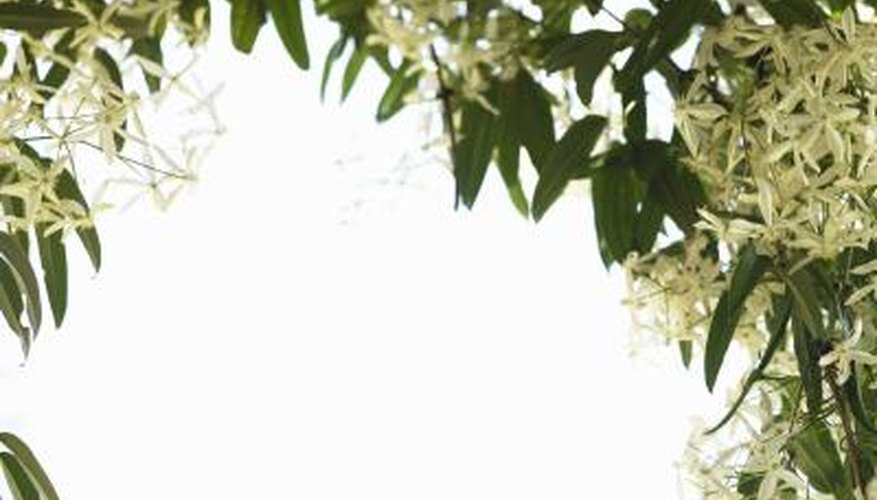The clematis is a type of climbing vine plant that is commonly used as a garden enhancement. Clematis are mostly woody deciduous plants, although some types are evergreen and herbaceous. With over 250 species of clematis, not including the number of clematis hybrids, naming a particular clematis plant is potentially difficult. Fortunately, you have the option to inspect the leaves and the other plant traits to identify the specific type of clematis that you come across.
- The clematis is a type of climbing vine plant that is commonly used as a garden enhancement.
- Fortunately, you have the option to inspect the leaves and the other plant traits to identify the specific type of clematis that you come across.
Inspect the way the leaves are positioned on the clematis vine. Clematis leaves grow opposite each other on the stem.
Look at the shape of the leaves to help identify the type of clematis. Clematis virginiana, for example, has compound leaves that have three to five elliptical leaflets with toothy edges.
Measure the size of the clematis foliage and note its texture. For instance, the Japanese clematis grows leaves that measure 2 inches to 3 inches long and are smooth to the touch.
Watch the plant during the fall and winter months to see if the leaves die back. Most clematis are deciduous and lose their foliage during the fall months, but other types, like the Armand clematis, are evergreen and keep their foliage throughout the year.
- Measure the size of the clematis foliage and note its texture.
- Most clematis are deciduous and lose their foliage during the fall months, but other types, like the Armand clematis, are evergreen and keep their foliage throughout the year.
Check the colours of the flowers on the clematis plant. The clematis florida var. sieboldiana has white sepals with purple centres, while the clematis fireworks grows mauve petals with bright pink stripes in the middle of each one.
